SOCIAL LOCATION
I am Moana Hall-Smith, kaihautu of Te Manawa o Te Wheke Taapapa. I am also a PhD student at Otago University. My research topic is: The divine colonisation in the Book of Judges: A Maori woman’s ecological reading. Through my parents I belong to two main tribal groups and have close links to my English ancestry. My father Rangi Heiwari Smith was tribally linked to Te Aupouri and Te Rarawa tribes and it is through him that my sense of place and spirituality became firmly grounded. He developed in me a spiritual relationship to our tribal maintain, our whenua, and its waters. My maternal grandmother Maryanne Edmonds was of Pākehā/European descent and strongly influenced by her white Church of England heritage. In 1908, she married Paddy Wynyard from Karetu in the Bay of Islands whose tribal links are Ngapuhi.
I read the text as a Māori woman, who is a product of a partnership, between Māori and Pākehā. As a New Zealander indigenous person living in a country originally settled by my Māori ancestors but subsequently entered by my European forebears, I feel caught in a space Bhabha calls "in between-ness" a person straddling two cultures, Māori and Pākehā. [1]It is an association that in many ways connects me to the colonizer and the colonized. These are the lens I bring to the text - a Māori woman living in Postcolonial New Zealand
INTRODUCTION
First of all I would like to thank the Creator. She has blessed me in more ways than I can imagine. I pay homage to my tupuna who have been my inspiration. It is they who have provided me with the fertile ground from which I sprung. I pay tribute to Professor Elaine Wainwright School of Theology, University of Auckland who gave me a deep and profound interest in hermeneutics, by introducing me to Heidegger, to Ricouer to Gadamer and other equally “hot” philosophers who provided me with ways to read the bible using my own lens.
On the 23rd & 24th April this year TMOTW Amorangi met at Ruatoki to hold their annual Diocesan meeting After a two hour discussion on this text more than 90% of the Amorangi “supported a motion to ordain gay and lesbian candidates into full ministry of the Anglican Church after careful and prayerful discernment”.
For me it was a day when grass-roots people’s concerns and voices were heard. That day we listened to their stories of pain, of experience, of culture of fear and reluctance to read such terror filled texts. These are the people who do not read theology, they do not write theology, and they do not ponder and wonder theologically instead they live theology. According to Bishop Muru Walters, “often when the experiences of grass-roots people”, read the text, the interpretations are discredited as popular, simplistic, enthusiastic, over imaginative.” I support you Bishop Muru because the real histories of the oppressed and subjugated peoples do not form the necessary data for doing theology according to the Biblical historical gatekeepers.
But today (in the limited time afforded) I offer with humility an interpretation of Leviticus 18 from an indigenous perspective, from a postcolonial context that is connected to Maori philosophy and principles despite some criticisms about using such an approach.
WORLD AND TEXTUAL WORLDS
In reading the biblical text we are simultaneously in contact with a least three worlds, the “world behind the text”, the “world in the text” and the “world in front to the text”. These three worlds promise an interaction between different understandings of human relationships within the ancient world of Israel and how they relate to a contemporary Māori world.
The world behind the text is the world of the author. It represents the social and cultural context in which the text first emerged. The world in the text; with its attention to word structure, word meanings, uses of dialogue and narration, irony and rhetorical style give meaning to the text. The world in front of the text is where I stand – the present reader. This is the challenge I have in front of me today, to understand the encounter between the biblical text as Word of God and a Maori reader in postcolonial New Zealand.
READING LEVITICUS 18
When I enter the Leviticus 18 text; I begin to recognize the values belonging to another people in another world (in this case Hebrew) that have for centuries lived under the political yoke of the powerful Babylonian, Assyrian, and Persian empires. The text in many ways demonstrates the same effects of colonisation, imperial domination land issues, marginalization and male power experienced by Māori in postcolonial Aotearoa, New Zealand. So by applying postcolonial lens similarities emerge from out of the two worlds; the struggle for resources, namely land.
As a Māori reader living in post-colonial Aotearoa, I will use a Māori Kaupapa framework that embraces a limited number of Māori values that appear in the texts nnamely,
- whakapapa
- whanaungatanga
- whenua
- manaakitanga
- tapu and noa
When I look at the text I immediately identify whakapapa.
1 The LORD said to Moses, 2 "Speak to the Israelites and say to them: 'I am the LORD your God. 3 You must not do as they do in Egypt, where you used to live, and you must not do as they do in the land of Canaan, where I am bringing you. Do not follow their practices. 4 You must obey my laws and be careful to follow my decrees. I am the LORD your God. 5 Keep my decrees and laws, for the man who obeys them will live by them. I am the LORD.
- First God the creator
- Second Moses the tohunga/priest/messenger
- Then the land/whenua
- Next The people (Israelites) Last God the creator
CREATION TO CREATION
Whakapapa– it is a way of thinking, a way of learning, a way of storing and debating knowledge. It is through whakapapa that Māori people trace ourselves and our ancestors to land to our mountain, marae and river to creation. According to Māori everything has a whakapapa, birds, fish, and everything begins with God the creator and ends with God the creator.
In the Hebrew world “lying with a man as with a woman “ was considered an abomination The Hebrew scientific understanding was the male semen contained the whole of nascent life therefore male homosexual acts or masturbation was considered sinful. And that tells me the “wasting of seed” - the breach of whakapapa rather than the sexual act is considered wrong.
Within the Māori context the continuity of descent-lines and the flow of ancestral blood through the generations is of upmost importance, because it is the genealogical descent of all living things from the gods to the present time. Hence this same sex relationship could be considered a breach of whakapapa. However, a woman who is unable to procreate (barren/whare ngaro) continue to play a major role in her iwi because she has genealogical/whakapapa rights to the land through her parent(s). Equally so exists the same inheritance rights with infertile mone’s genealogy because all of humanity whakapapa to creation/creator.
Consequently, one can appreciate in both worlds the Hebrew and Māori tribes struggling to populate a country in which its people were outnumbered, would value procreation highly. In this 21st century world one that is facing total annihilation through over population; such a value is rendered questionable
WHANAUNGATANGA
Embedded in one’s whakapapa is whanaungatanga which is about family and community and focuses upon relationships. Whanaungatanga recognises the many branches and associations, interactions and relations within and outside the Maori world. It conveys the meaning of Kinship or a sense of belonging – a privilege not experienced by western interpreters. Many Māori cultural beliefs prescribe whanaungatanga as ways of nurturing relationships, restoring a balance, looking after people, and being very careful about how others are treated. Therefore, homosexual acts, just like heterosexual acts are but one feature of a much larger complex of factors that contribute to the make- up of relationships. The focus on the sexual act is to miss the point of the larger context of whanungatanga.
In Leviticus 18 we reading through the list of prohibitions we reach again a breach of whanaungatanga. Nowhere in the Leviticus 18 text does it say “that man shall not lay with his daughter which is the commonest type of incest in our society. Apparently, in Ancient Israel a daughter is a possession that a father can do anything with. This is a breach of our whanau values, because we know incest is an act of shame according to our creation stories. Hinetītama the daughter of Tane and Hineahuone (first woman) is devastated to learn that Tane, who took her as his wife, was also her father. Full of shame Hinetītama fled to the underworld where she is known as Hine nui i te pō the ancestress of the underworld to whom all human descendants go to upon death.
WHENUA
From the text the sins in question are describing as defiling both the people and the land. The intimate relationship between land and purity is most vividly brought into focus in (Chaps 18-26). Impurity in human relations results in defilement of the land, suggesting the land and people are inseparably bound.
For Māori the relationship between women and land is reinforced by the fact that Hineahuone, who gave birth to the first human life, was shaped from the earth at Papatuanuku’s pubic region. And it is the land that is handed down by whakapapa from generation to generation. The relationship is not about owning the land, rather it is about stewardship/kaitiakitanga over the land.
The Māori word for land is whenua, the body of Papatuanuku, the mother of humanity which nourishes us and gives us life. But the word for whenua means more than land it also means placenta the womb of woman that nourishes the foetus allowing it to develop and be born. This ideology of Māori culture ties the pieces together and bonds the people to the land hence the name tangata whenua. – Indigenous people.
The Israelites on the other hand did not have “natural” link to the land (the biblical narrative depicts them as coming from outside the land, as foreigners), did they feel they had to make a connection to the land through their theology? The land belonged to them because God promised the land to their ancestors. The land’s integrity is a product of the community’s integrity or purity. Through unrelieved impurity both land and its inhabitants are defiled and punished is rendered against both land and people. The land of Canaan is Israel’s domain or inheritance promised by covenant and fulfilled in occupation (Leviticus 20). Thus to speak of Israel’s land is to speak of Israel’s distinctive ethos, Israel’s dwelling in purity. At the same time I shudder to think how the “abomination” of the Canaanite culture in this text was superseded by the Israelite culture. At the same time with Leviticus’ talk of the land vomiting out those committing abominations defined by the inhabitants of the land I begin to sit very un-comfortably with my colonizing and hyrid context.
MANAAKITANGA
Leviticus 18 is about these purity codes (constructed by the elites) to help them unite as one people who were collectively threatened by a common enemy. The greatest threat regarding the Israelites was the possibility of its assimilation into Babylonian culture and ultimate disappearance. The Deuteronomists devised and refined the culture of purity to define Jewish culture and community, to demark the boundaries between its people and all others, and to preserve Judaism in the ancient world.
Māori on the other hand wanted to live alongside the stranger - the Europeans not as them but with them. We did not have purity codes instead we treated them as manuhiri/visitors and offered them the manaakitanga/hospitality arid generosity of our people. When we practise manaakitanga we acknowledge the mana of others is equal or greater than ours. We do this by ensuring that we respect all people in all situations. With our European manuhiri, we established trading links with them. We did not cede authority to them instead we gave them a new status when we signed a treaty with them. We called them “tangata Tiriti” the treaty people, this treaty gave them the right to stay among us, and consult and negotiate with us rights and guarantee-, for a future based on trust, and share the gospel message and the Christian faith with us. This treaty was and still is regarded as a sacred covenant and was to last forever.
TAPU AND NOA
There are many meanings and conditions associated with tapu. The Leviticus texts part of the Hebrew Purity Code. They defined what is clean and unclean, men/women/, pure/defiled, kosher and not kosher. The Leviticus code worked to polarize society by setting apart different groups. There was a hierarchy of purity. Priests were on the top, women and children somewhere in the basement.
According to tikanga Māori both women and men possessed intrinsic tapu, that life principle that bound them to past, present and future generations. Women were considered highly tapu/sacred during menstruation and childbirth. These inherent pollutant qualities of women were what enabled them to perform whakanoa rites (removal of sacredness). It should be noted that tapu was associated with blood flow of any sort including the blood spilt on the battlefield and the flow of blood during tattooing. It can be argued that negative connotations that then attached to the female sexual organs were entirely consistent with the Leviticus text’s notions of women being unclean because of menstruation (Lev 18:19). Perhaps the most denigrating aspect of this text is the colonization of tapu and noa that lies in the denial of the intrinsic tapu of women.
The strength of the purity code mindset is still very much with us today. The purity codes in Leviticus had/have a strong hold on people and it is/was a struggle to break free of all the attitudes and prejudices that the code has engendered and nurtured in people’s hearts. I believe this is a text that Māori need to interpret through storytelling, through experience, and through their own tikanga Māori values which ensure we treat others as a gift of whakapapa/te Atua/creator.
In finishing up I wonder whether I have captured what I set out to do and that is to let the text speak for itself so we can leave here knowing we can re-weave our ideologies, our personal beliefs with the intention of bridging the gaps or difference of opinion, tradition and ideology that separate us.
In the end what matters is that we continue to have further conversations with the appropriate interpretive lens reminding us that the figure of God is to be glimpsed lurking behind the terror filled details of these texts.
Kia ora mai tātou
[1] Homi K. Bhabha, The Location of Culture (London: Routledge, 1994).






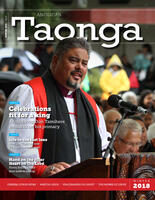
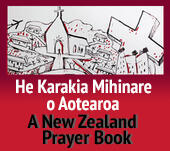
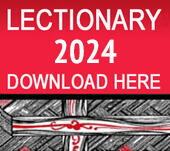


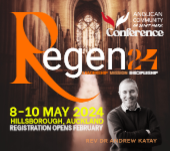
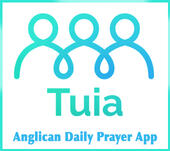

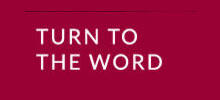


Comments
Log in or create a user account to comment.